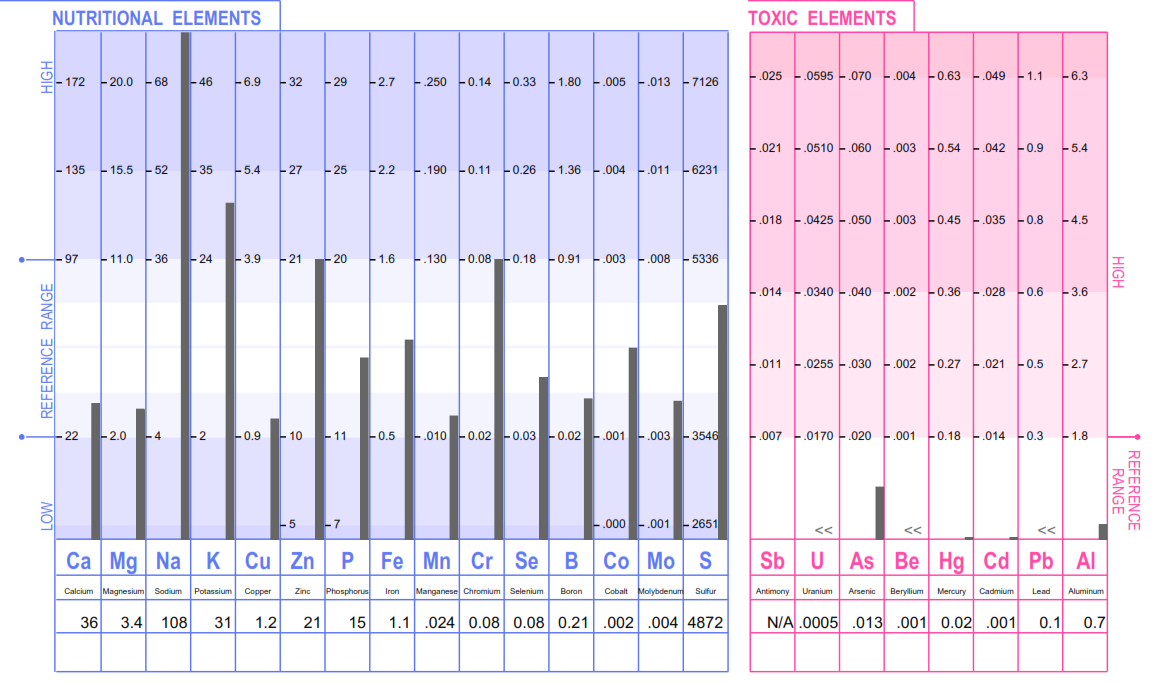
For a consultation on your health issues, please book online or call for an appointment
FUNCTIONAL PATHOLOGY TESTING
HAIR TISSUE MINERAL ANALYSIS (HTMA)
What is Hair Tissue Mineral Analysis (HTMA)?
- Hair Tissue Mineral Analysis or HTMA, is an innocuous and non-invasive pathology test.
- Using hair taken from your head, the test measures the levels and relative ratios of toxic and nutrient minerals found in your hair.
- It can give reliable data on more than 35 nutrient and toxic minerals, and over 25 important mineral ratios that can aid in the discovery of nutrient mineral imbalances or toxic mineral excesses that may be affecting your health.
Why test for minerals?
- Minerals are often referred to as the basic ‘spark plugs’ of life, and are necessary for your well-being, vitality healing and growth
- They are important contributors to many areas of your body to produce structural support in teeth and bones, as well as maintaining your hydration and pH balance, allowing muscle contractions, nerve activity, enzyme reactions and are crucial in your body’s energy production.
- Numerous health conditions can be exacerbated by toxic metal excesses and accumulation in your body, that can lead to mineral imbalances.
Why Use Hair and not a Blood Sample?
Hair is easily obtained, whereas taking blood can be upsetting for some. When you are acutely exposed to toxic minerals, they will circulate in your blood for 48-72 hours. After which your body will store these minerals in your tissues, like your hair. It is this mineral storage that can help give information to help unravel health issues. Also, your blood is not a very useful place to test for other less toxic but very essential trace minerals. The minerals absorbed from your foods are transported in your blood to specific locations in the body, so blood levels change frequently, and a blood test may not capture levels accurately.
Hair samples can reveal the current intercellular levels of the mineral (inside your cells not circulating in the blood), which can help determine mineral levels and ratios.
What Kind of Health Condition can HTMA Help?
Health issues that may occur as a result of mineral imbalances. Conditions that may be supported but the information HTMA can provide include
- Hyperactivity in children and learning difficulties
- Neurological concerns – migraines and headaches, concentration
- Cardiovascular concerns – high cholesterol, high blood pressure
- Thyroid conditions – fatigue, insomnia and weight changes
- Adrenal stress – mood changes, early morning waking, energy slumps
- Metabolic issues – weight gain, blood glucose dysregulation
- Skin conditions – psoriasis and dermatitis
How is the hair sample taken?
The hair should be clean, well rinsed, untreated and uncoloured.
Using clean, stainless-steel scissors cut small amounts of hair from the back of the head.
Cut the hair as close to the scalp as possible. If the hair is less than 4cm in length, keep all of it for testing.
How Much Hair does a HTMA Need?
The laboratory requires 0.5gm (500mg) or about one (heaped) tablespoon of hair for testing.
What if my Hair is Dyed?
If hair is treated and coloured, we need to wait six to eight weeks and take the sample from the freshly grown (i.e. untreated) hair.
Any hair treatment or colour, natural or otherwise, can potentially lead to less accurate results for some elements tested.
Make A Move Today
If you are concerned that toxic mineral or mineral imbalance may be playing a role in your health issues, then an HTMA test may be right for your right now. It can be run, and the results can be considered within a Nutritional or Naturopathic appointment.
For a consultation book an appointment today with Sue in Neutral Bay or via Telehealth soon. Booking is available online through the website.

